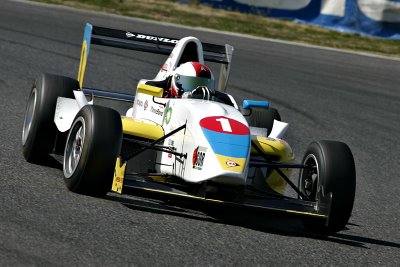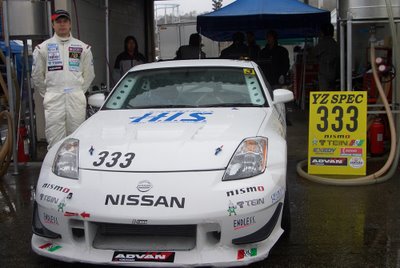|
Last Updated: May 15th, 2007 - 02:07:52 |



The differences - Super Taikyu Class-3 Nissan Fairlady Z (Z33 350Z) and Formula Challenge Japan-spec Formula Car.
After the season-opening FCJ race at Suzuka in March, I hopped into the Z the following day for a few laps and I was completely thrown off - I was so used to the sweet feeling of the formula car that now driving a production car felt like this huge slow beast. You feel the weight shifting dramatically from left to right and back-and-forth, the car barely turns, and the brakes don't work.
Since, I've driven the Z a bit more and also got back into the FCJ car after the Hiland race with the Z. The readjustment to the two radically different driving styles is a huge challenge, but an interesting one - and an ability to manage such different cars is pivotal to being a great racecar driver.
The FCJ formula car - 600kg, open-wheel, and right-hand sequential shifter with ignition-cut wire (meaning I don't have to lift off the gas when shifting).
The Z - 1300kg, production car, left-hand H-pattern shifter.
FCJ - left foot only works the brakes, right foot only works the gas. Zero use of clutch pedal.
Z - primarily right-foot-braking and rev-match with the right foot while on the brakes, and left foot sometimes used for brake adjustment and the clutch pedal.
FCJ - no power brakes, no power steering. (Brake pressure applied by the foot is about 70psi)
Z - yes.
FCJ - incredible amount of downforce, allowing for up to 2.8 Gs in brakes and cornering.
Z - nearly no downforce, brakes and cornering at around 1.8 Gs.
FCJ - you get wet when it rains.
Z - it's got a roof.
FCJ - 40 minute races.
Z - 500km distance races with 2 other drivers, and one 24-hour race.
But of course, there are more similarities than differences - the biggest one being that both cars have 4 tires in contact with the ground and you have the controls to make the car brake, accelerate, and turn!

Discuss this article on AutomotiveForums.com
© Copyright 2006 by AutomotiveArticles.com
Top of Page

 AF Project Vehicle | Corporate
AF Project Vehicle | Corporate



 AF Project Vehicle | Corporate
AF Project Vehicle | Corporate

